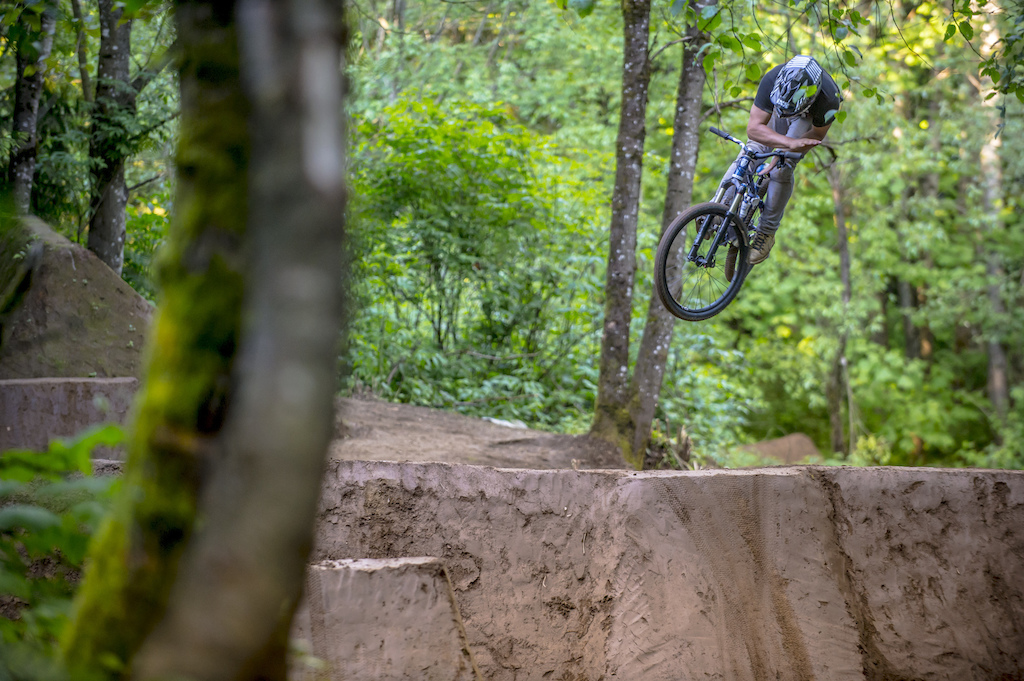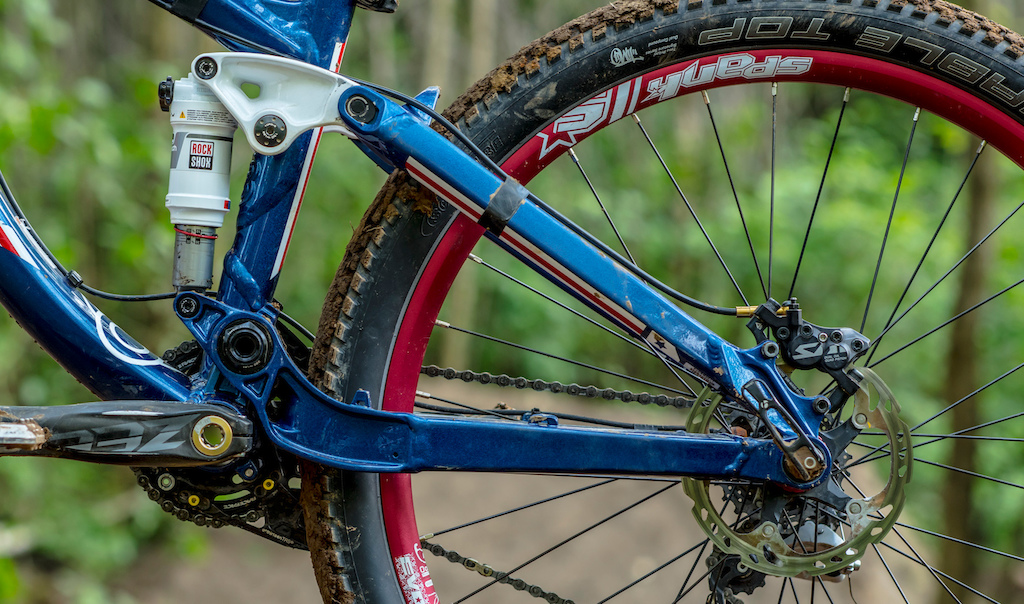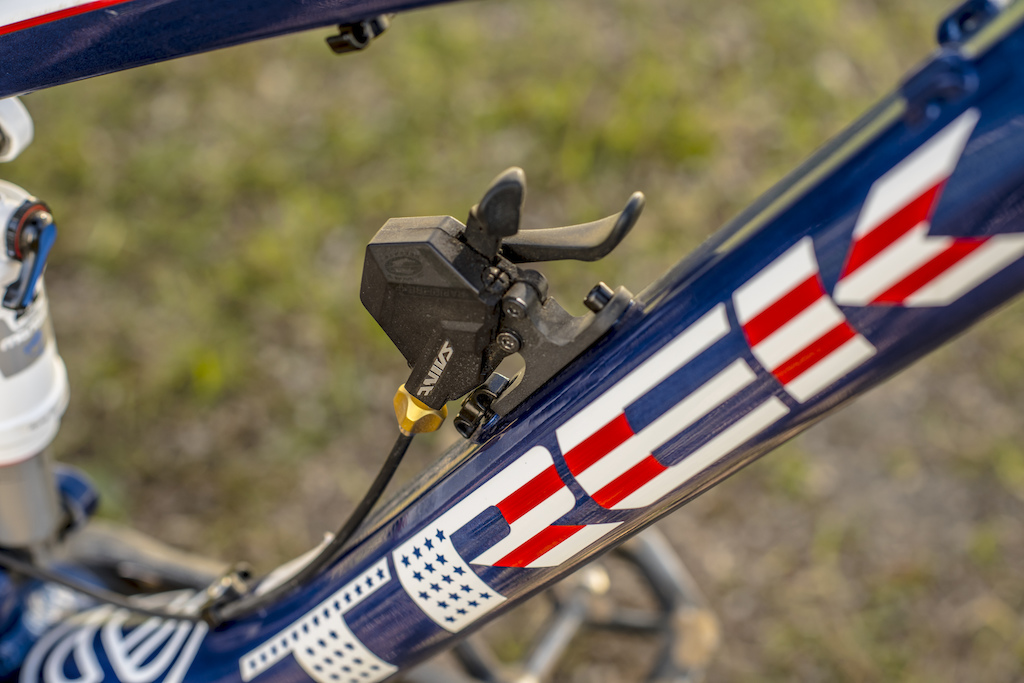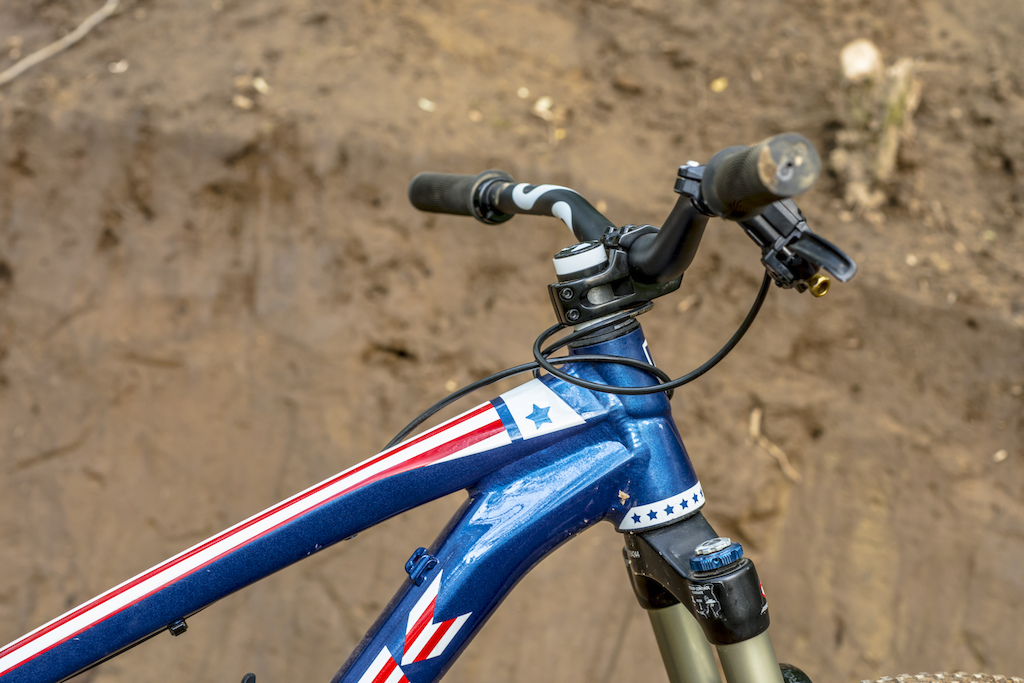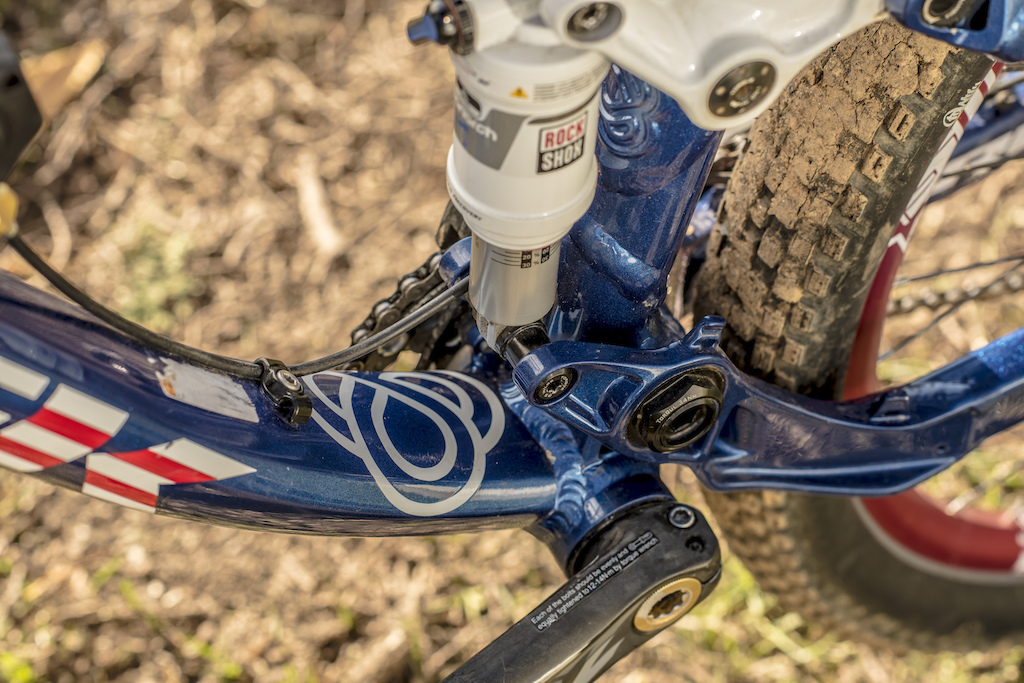• Intended use: dirt jump / slope
• Rear wheel travel: 100mm
• Wheel size: 26″
• Aluminum frame
• Active Braking Pivot suspension
• 12 x 142mm rear axle
• ISCG 05 chain guide tabs
• Single large size offered
• Colours: black, ‘R-Dog’ American
• MSRP: $1,539.99 USD (frame/shock only)
The production aluminum Ticket S frame is actually almost the very same as you’ll see under Semenuk, with only the carbon seat stay unit found on the Silent Assassin’s competition machine to set it apart. That means that the Ticket S you can buy from your shop is sporting the same geometry, and is surely within a handful of grams when it comes to weight. You’ll also be on a pretty short list of riders if you get yourself a Ticket S, as Trek says that the bike is actually a limited production item and that relatively few will ever be welded up. That makes sense because as interesting as bikes like this are, the market for a 100mm travel slope-specific bike is far smaller than even the demand for downhill rigs, which themselves only make up a very small piece of the pie compared to the bread and butter bikes in a company’s lineup. In other words, you’re a lucky duck if you have one of these limited production bikes sitting in your garage.
Trek has long employed their Active Braking Pivot design on everything from their cross-country race bikes to the long-travel Session models, and you’ll also find it here on the back of the 100mm travel Ticket S frame. The system allows the dropout pivot to rotate concentrically around the axle, which thereby limits the amount of rotation between the caliper and rotor. Trek says this helps to keep the suspension performing in a more consistent manner, regardless of if the rider is grabbing a handful of brakes. Just as with the other ABP equipped bikes, the Ticket accepts a standard 12 x 142mm thru-axle.
The Ticket’s rear suspension has been tailored for its purpose – to hit massive jumps and drops, which can sometimes lead to a missed landing. To that end, Trek has built in a more progressive ramp-up to the bike’s travel than you’d find on a 100mm bike intended for a different purpose. This is to keep the rider off the bottom of the shock’s stroke during hard landings, but also to provide more ‘pop’ off of the lips of jumps.
The confidence inspiring feel is partly down to the large sized frame’s 22.1” top tube that Dueck said he felt was spot-on for how the bike is meant to be ridden, saying ”It’s long enough to allow me to be comfortable in the air, but not short to the point where I’d have to worry about the end of the handlebar hitting the seat when doing bar spins or tail whips.” Clearly those aren’t the concerns of the average rider, but this isn’t the bike for an average rider, either.




